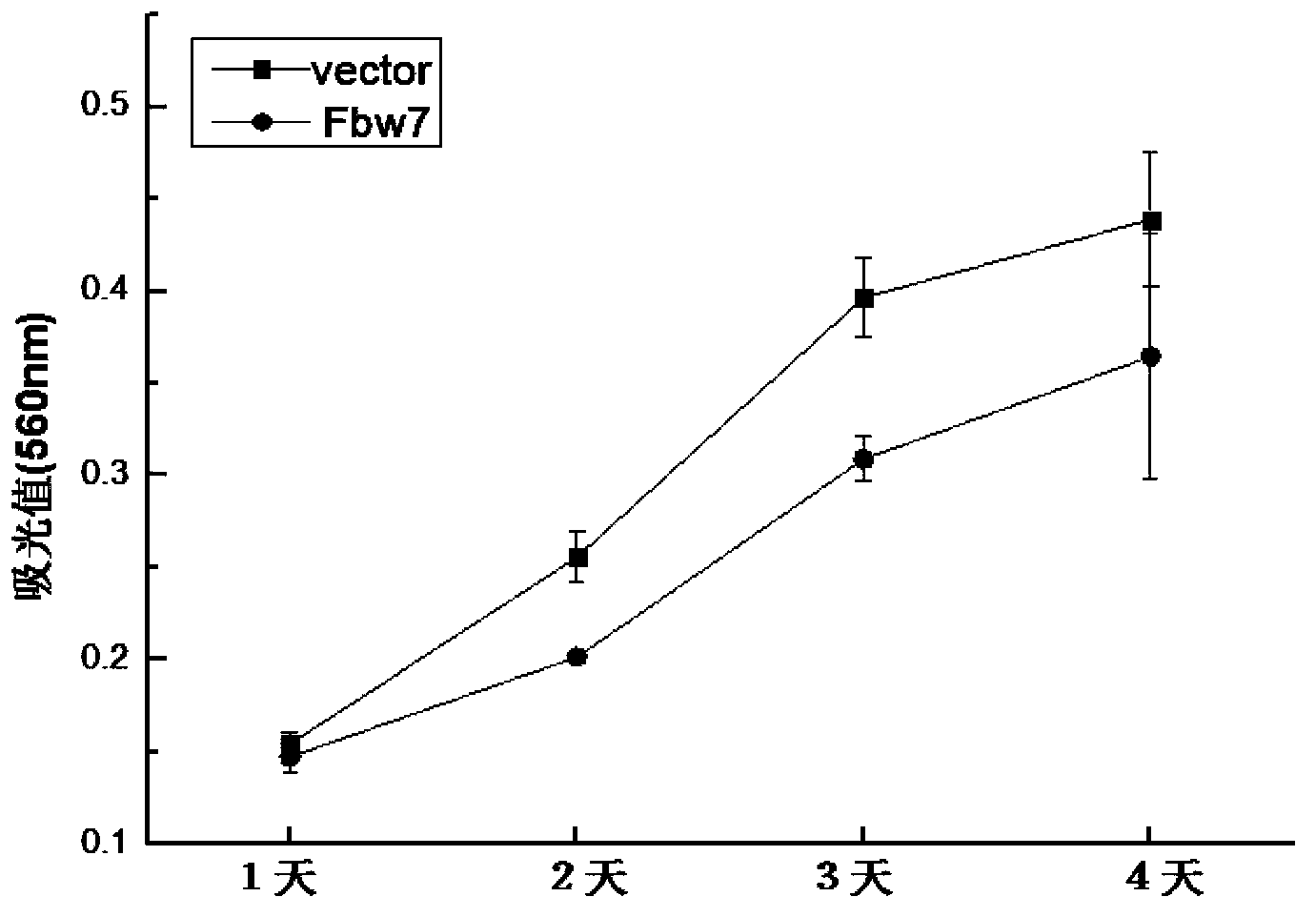PcDNA3.1(+)-Fbw7 (F-box and WD repeat domain-containing 7) recombinant plasmid as well as construction method and application of PcDNA3.1(+)-Fbw7 recombinant plasmid
A technology for recombinant plasmids and construction methods, which can be used in recombinant DNA technology, drug combinations, and pharmaceutical formulations to solve problems such as signal enhancement and enhancement
- Summary
- Abstract
- Description
- Claims
- Application Information
AI Technical Summary
Problems solved by technology
Method used
Image
Examples
Embodiment 1
[0054] The effect of recombinant plasmid PcDNA3.1(+)-Fbw7 on the proliferation ability of cholangiocarcinoma cell line, the specific operation steps are as follows:
[0055] The cholangiocarcinoma in the logarithmic growth phase was transfected, the cells were digested and counted after 24 hours of transfection, and 5000 cells per well were seeded in a 96-well plate, and 8 replicate wells were set up for each group, with a final volume of 200 μL / Wells, and set a column without cells and only 200 μL of culture medium as blank control wells, fill the edge wells with PBS, put in 5% CO 2 Adhere to the wall overnight at 37°C in an incubator. According to the requirements of the experimental design, MTT was added in the dark after culturing for different periods of time, and the medium was removed in each space before addition, and 60 μL of medium and 10 μL of MTT solution with a concentration of 5 mg / ml were added to each well, and MTT was carefully sucked out after incubation at ...
Embodiment 2
[0058] The effect of the recombinant plasmid PcDNA3.1(+)-Fbw7 on the migration ability of cholangiocarcinoma cell line, the specific operation steps are as follows:
[0059] Serum-starved cells were treated for 24 hours, and the Migration / Invasion chamber was hydrated with DMEM serum-free culture solution: 500 μl culture solution was added to the upper layer of the chamber, and 700 μl culture solution was added to the lower layer, and placed in a 37°C cell incubator for 2 hours. Cells were digested and counted, and serum-free DMEM was used. Resuspend and dilute to 1×10 5 / mL, remove the DMEM culture medium in the small chamber, add 700 μl 10% FBS DMEM culture medium in the lower chamber, add 500 μl cell suspension in the upper layer, incubate in the incubator for 48 hours, remove the culture medium, wipe off the cells in the upper chamber with a cotton swab, and fix with methanol for 20 minutes , washed 2 times with PBS, stained with crystal violet staining solution for 30 min...
Embodiment 3
[0062] The effect of the recombinant plasmid PcDNA3.1(+)-Fbw7 on the drug sensitivity of cholangiocarcinoma cells, the specific operation steps are as follows:
[0063] After the recombinant plasmid PcDNA3.1(+)-Fbw7 was used to act on the cholangiocarcinoma cell line QBC939, the semi-lethal IC50 value of the chemotherapy drug cisplatin was used to culture for 48 hours, and the survival rate of the cells was detected by the MTT method (see Example 1 for the steps) , the result is as image 3 As shown, it shows that the recombinant plasmid PcDNA3.1(+)-Fbw7 can increase the sensitivity of cholangiocarcinoma cells to the chemotherapy drug cisplatin, and synergistically promote the chemotherapy drugs to inhibit the proliferation of cholangiocarcinoma cells QBC939.
PUM
 Login to View More
Login to View More Abstract
Description
Claims
Application Information
 Login to View More
Login to View More - R&D Engineer
- R&D Manager
- IP Professional
- Industry Leading Data Capabilities
- Powerful AI technology
- Patent DNA Extraction
Browse by: Latest US Patents, China's latest patents, Technical Efficacy Thesaurus, Application Domain, Technology Topic, Popular Technical Reports.
© 2024 PatSnap. All rights reserved.Legal|Privacy policy|Modern Slavery Act Transparency Statement|Sitemap|About US| Contact US: help@patsnap.com










